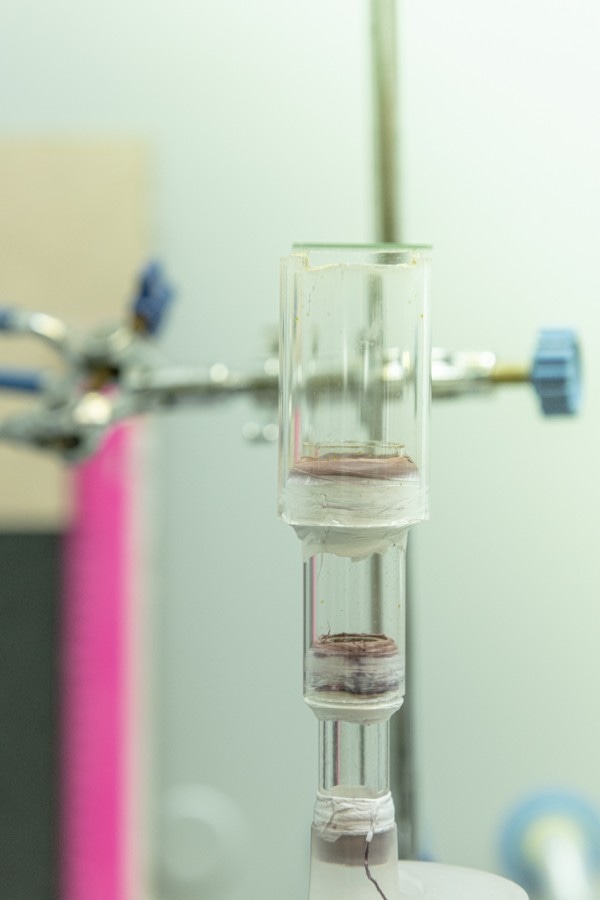Jul 25 2019
Researchers from the Skoltech Center for Photonics and Quantum Materials (CPQM) have formulated a novel technique to fine-tune the optoelectrical properties of single-walled carbon nanotubes (SWCNT) by applying an aerosolized dopant solution onto their surface, and as a result, paving the way for new SWCNT applications in optoelectronics. The research findings have been published in The Journal of Physical Chemistry Letters.
 (Image credit: Skolkovo Institute of Science and Technology (Skoltech))
(Image credit: Skolkovo Institute of Science and Technology (Skoltech))
The recent months have seen the appearance of foldable and bendable screens in the market, boosting the development of exclusive materials and making way for the next generation of products of almost all sizes and shapes. Transparent conductive films (TCF) produced using an advanced solution, SWCNT, are looked at as the core element of flexible and transparent electronics.
In contrast to the customary n-type transparent rigid conductors, such as aluminum-doped zinc oxide or tin-doped indium oxide, the flexible and stretchable SWCNT films possess p-type (hole-type) conductivity. However, weak control over SWCNT’s electronic properties is the key deterrent for their widespread industrial use. This is especially real for optoelectronic applications, which frequently need efficient control over conductivity and Fermi levels, amongst other things.
Carbon nanotubes are typically treated with a doping agent.
SWCNT conductivity is enhanced using one of the three most common doping methods: drop-casting, spin-coating or dip-coating, which can significantly decrease the resistance of pristine SWCNT films (up to 15 times) but fail to ensure spatial uniformity and have poor scalability. This leads to non-uniform evaporation of the liquid solvent, resulting in a coffee-ring effect. Moreover, none of these techniques enable precise control over the Fermi level in the SWCNT films.
Alexey Tsapenko, PhD Student, Skoltech
Researchers from the Skoltech lab directed by Professor Albert Nasibulin formulated a new method guaranteeing even, controllable, and easily reproducible aerosol doping of SWCNT. The performances achieved using the new technique lead the way, stimulating the replacement of the currently widespread rigid transparent metal-oxide conductors by flexible and transparent electronics, and the development of new applications based on extremely conductive transparent films.
“Our method allows easy tuning of SWCNT film parameters thanks to time-controlled deposition of doping aerosol particles,” adds Alexey.
The project scientists observe that the new fine-tuning method developed particularly for carbon nanotubes can be applied for electronic structures of other low-dimensional materials.